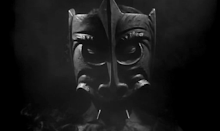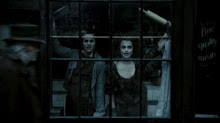
It’d be wrong to call the Drive By Trucker’s last album, The Big To Do a disappointment. It was filled with some fine songs. But it was uneven, a lopsided grasp at mainstream success tied up in a few singles upon which everything was bet. It was the first Drive By Truckers album since A Blessing And A Curse that I found to be anything less then compulsively listenable.
Go Go Boots thankfully returns the band to that compulsive level. It’s hard to say what makes the album feel so different. Much of it after all was written and recorded in the same session as The Big To Do. Yet from the opening track the haunting elliptical “I Do Believe” Go Go Boots does feel like a much different beast, more focused less determined to impress. Like the best Trucker’s albums it simply acts as a stage for three of the best song writers in modern rock or country to do what they do best, without ever feeling like one is crowding the others off.
Patterson Hood, Mike Cooley, and Shoanna Tucker all get ample room to shine in their assorted tracks. Hood provides some more of his haunting story songs, the kind that make him sound like the heir to Nebraska era Springsteen. "Ray’s Automatic Weapon, Used To Be A Cop and The Fireplace Poker" all impress with their scope. But it’s The Thanksgiving Filter that really impresses me, for the resemblance it bears to the novelty songs that started The Trucker’s career yet it's written with a maturity and skill that only fifteen years of song writing can provide. Compare it with something like Zoloft and you can see the evolution of an artist.
Mike Cooley provides a crop of wry, laconic songs, which as always turn unexpectedly moving with his quavering voice. Only Shonna Tucker’s songs compare disfavorably to those on Big To Do. Not that they’re bad songs by any means. As always Tucker proves herself one of the best vocalists in country, able to get a metric tone of pain in her voice. But that’s all she gets to do on this record. Big To Do let her cut loose and have a little fun, better showing the versatility she has.
There are a couple of bum tracks but they’re few and far between. Really the only out and out stinker is the monotonous Everybody Needs Love and no matter how you slice it that’s a hell of an average.
Bands that can remain creative and vital after twelve albums are rare. Bands that leave you hungry for more after said same, are damn near non existent. With Go Go Boots The Truckers once more prove they are both











































































































































































